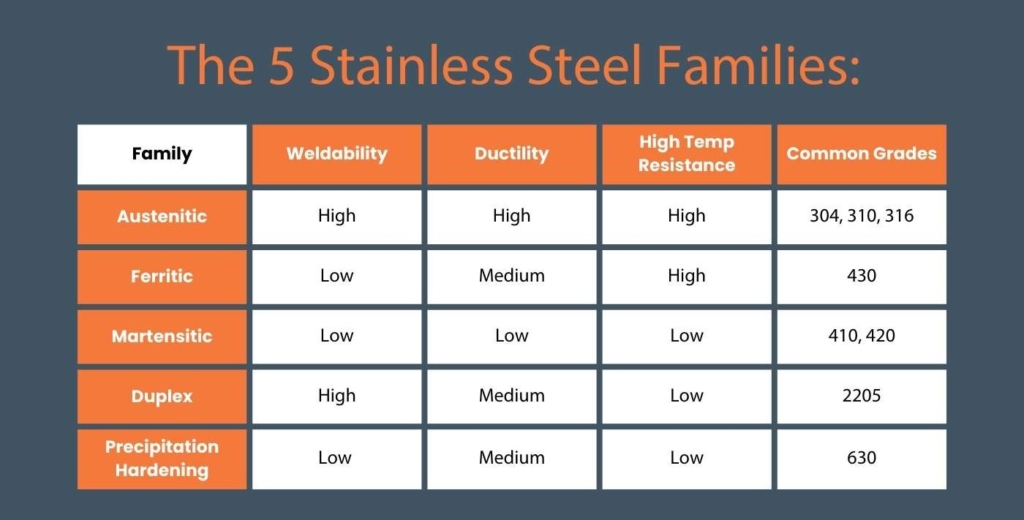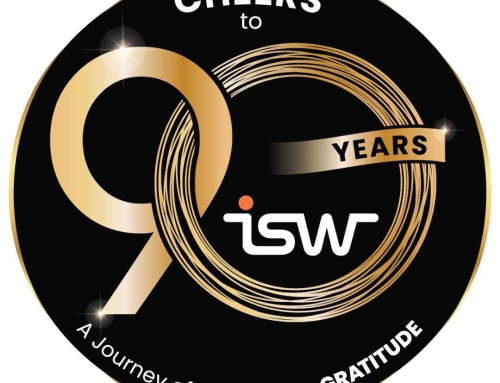WE’RE BACK with another edition of ISW’s Stainless Steel Mini Series! Before we dive into the next type/grade, we thought it would be helpful to layout some stainless steel basics! It turns out, there is A LOT to know, and we’re here to make you a stainless steel whiz! Ready?!
While many factors can play into grade selection for stainless steel, corrosion resistance is one of the most heavily considered, due to the varying environments the end products will be used in.
Generally speaking, the higher the levels of chromium, the more corrosion resistant the grade will be. All stainless steels are iron-based alloys with at least 10.5% chromium. The rest of the makeup is defined by various alloying elements, which control the microstructure of the alloy. Today, there are many different grades of stainless steel—which all fit into five different families:
- Austenitic
- Ferritic
- Martensitic
- Duplex
- Precipitation Hardening
Each family has its own set of benefits in comparison to the others- see the chart below for more details.

…So which stainless family is the most resistant to corrosion? The austenitic family, which contains the highest levels of chromium. About 50% of the stainless used today comes from this family, making it the most popular- in large part to AISI 304. AISI 304 Stainless contains 18% chromium & 8% nickel, and is sometimes referred to as 18-8 for that reason.
Speaking of AISI…you may have seen those letters when look at various types or grades of metal, but what do they mean?
AISI stands for American Iron and Steel Institute, a trade association that publishes standards for metals. The AISI numbering system for stainless is a standardized way to identify different types of stainless steel.
The AISI number for a stainless steel is a four-digit number. The first two digits of the AISI number indicate the type of stainless steel. For example, the AISI number for 304 stainless steel is 304. The “3” indicates that it is austenitic, while the “04” indicates that it has a specific composition of 18-20% chromium & 8-10.5% nickel. The last two digits of the AISI number may be used to indicate the specific grade of stainless steel. For example, the AISI number for 304L stainless is 304L. The “L” indicates a low carbon content, which makes it more resistant to pitting corrosion.
Another common standard is ASTM, or American Society for Testing and Materials. ASTM is an international organization that publishes technical standards for materials, products, systems, & services. Like AISI, ASTM standards are also commonly referred to by industry professionals ensure that steel products meet the requirements of specific applications. Some of the most common ASTM standards for steel include: ASTM A240-19: Austenitic Stainless Steels, & ASTM A36: Structural Steel.
Whether you learned something new, or that was just a refresher course, we hope this was helpful! Keep an eye out for our next Mini Series edition, coming soon!





